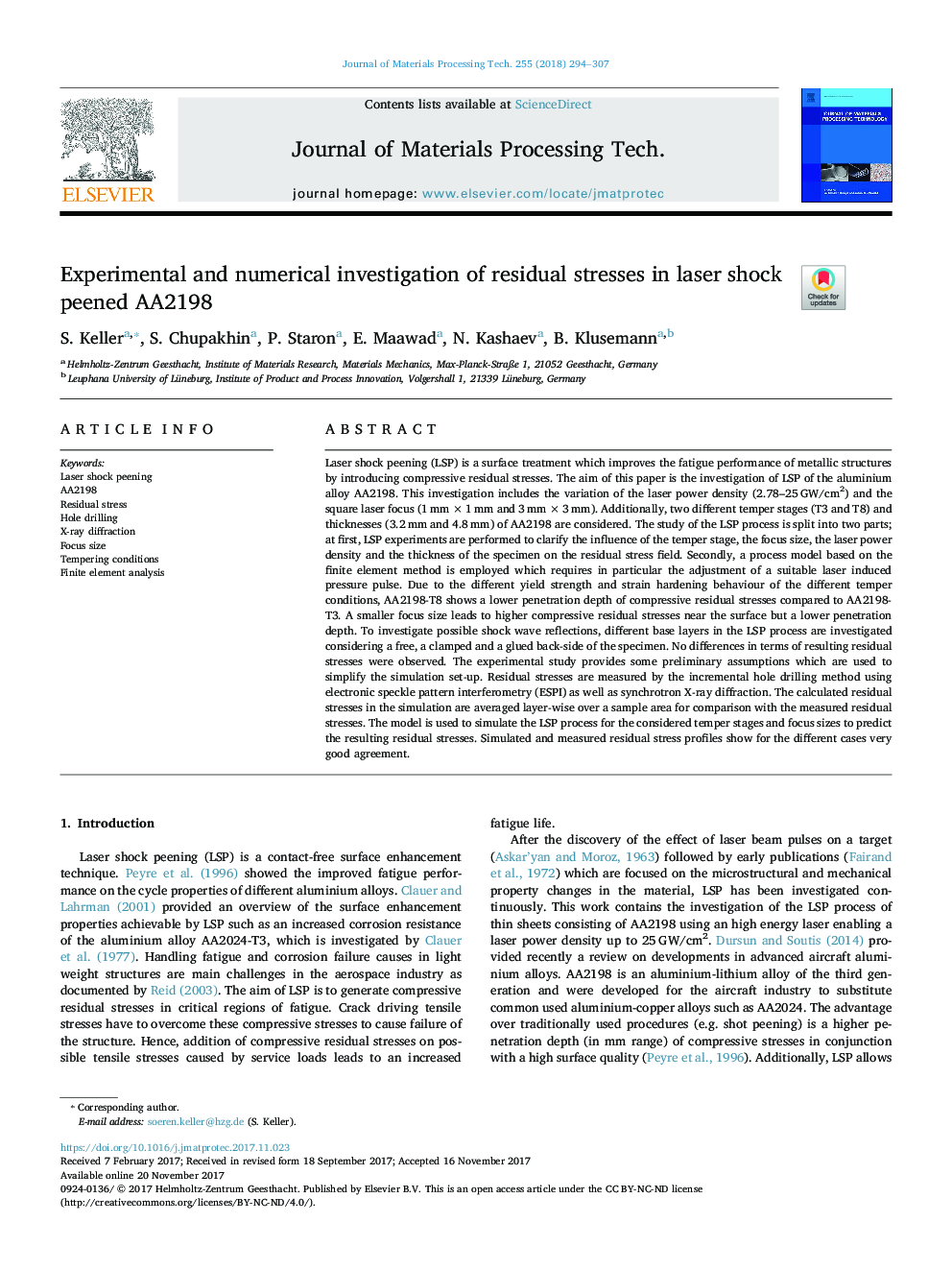| کد مقاله | کد نشریه | سال انتشار | مقاله انگلیسی | نسخه تمام متن |
|---|---|---|---|---|
| 7176443 | 1466712 | 2018 | 14 صفحه PDF | دانلود رایگان |
عنوان انگلیسی مقاله ISI
Experimental and numerical investigation of residual stresses in laser shock peened AA2198
دانلود مقاله + سفارش ترجمه
دانلود مقاله ISI انگلیسی
رایگان برای ایرانیان
کلمات کلیدی
موضوعات مرتبط
مهندسی و علوم پایه
سایر رشته های مهندسی
مهندسی صنعتی و تولید
پیش نمایش صفحه اول مقاله

چکیده انگلیسی
Laser shock peening (LSP) is a surface treatment which improves the fatigue performance of metallic structures by introducing compressive residual stresses. The aim of this paper is the investigation of LSP of the aluminium alloy AA2198. This investigation includes the variation of the laser power density (2.78-25â¯GW/cm2) and the square laser focus (1â¯mmâ¯Ãâ¯1â¯mm and 3â¯mmâ¯Ãâ¯3â¯mm). Additionally, two different temper stages (T3 and T8) and thicknesses (3.2â¯mm and 4.8â¯mm) of AA2198 are considered. The study of the LSP process is split into two parts; at first, LSP experiments are performed to clarify the influence of the temper stage, the focus size, the laser power density and the thickness of the specimen on the residual stress field. Secondly, a process model based on the finite element method is employed which requires in particular the adjustment of a suitable laser induced pressure pulse. Due to the different yield strength and strain hardening behaviour of the different temper conditions, AA2198-T8 shows a lower penetration depth of compressive residual stresses compared to AA2198-T3. A smaller focus size leads to higher compressive residual stresses near the surface but a lower penetration depth. To investigate possible shock wave reflections, different base layers in the LSP process are investigated considering a free, a clamped and a glued back-side of the specimen. No differences in terms of resulting residual stresses were observed. The experimental study provides some preliminary assumptions which are used to simplify the simulation set-up. Residual stresses are measured by the incremental hole drilling method using electronic speckle pattern interferometry (ESPI) as well as synchrotron X-ray diffraction. The calculated residual stresses in the simulation are averaged layer-wise over a sample area for comparison with the measured residual stresses. The model is used to simulate the LSP process for the considered temper stages and focus sizes to predict the resulting residual stresses. Simulated and measured residual stress profiles show for the different cases very good agreement.
ناشر
Database: Elsevier - ScienceDirect (ساینس دایرکت)
Journal: Journal of Materials Processing Technology - Volume 255, May 2018, Pages 294-307
Journal: Journal of Materials Processing Technology - Volume 255, May 2018, Pages 294-307
نویسندگان
S. Keller, S. Chupakhin, P. Staron, E. Maawad, N. Kashaev, B. Klusemann,